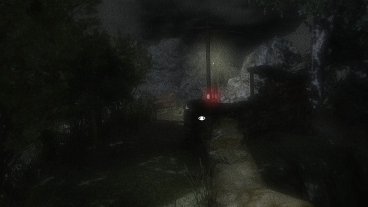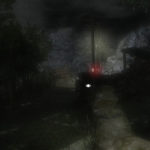
Montague’s Mount – Review
Waking up shipwrecked on a beach is the least of your worries.







First-person adventure games are nothing new, and lately we’ve seen a release of some critical hits such as Gone Home, the Amnesia series,and Dear Esther. The interesting twist that Gone Home and Dear Esther bring to the plate is that there is no combat to worry about, just your imagination and the game’s setting (both visual and aural) to ramp up the experience. These sorts of games are almost interactive stories, where you explore the setting as the narrative is told (or you discover through notes and items) to you.
Montague’s Mount is like those games. You awake on an island, suffering from amnesia and all you know is that the island appears deserted and in a state of ruin. Maybe hints of your past lay on this island, maybe what caused the shipwreck, or why the island is cluttered with personal belongings as if a great exodus was attempted. You’re surrounded by debris, and you’re limping – your first task to find a suitable stick to walk with.
Unfortunately this is where Montague’s Mount’s gameplay starts to show its ugly head. In order to create a sense of immersion, your character is limping from an injury of the shipwreck, causing you to move about in a meandering molasses-like pace. Searching the various bits of litter and wreckage takes some time due to your pace, but after acquiring the required walking stick, your pace hardly improves. There’s no faster walking pace, and so you are faced with exploring an island slightly slower than a baseball rolling uphill.
This is not to say that it’s a terrible design decision, since such a slow pace allows you to take in your surroundings and pay attention to the details in the objects. The graphics and setting are certainly atmospheric and foreboding: rain wetly falls from the sky, the color palette is generally muted, and you can hear faint child laughter amongst the soundtrack. The film grain setting can look a bit overdone and makes watching the screen a bit tough on the eyes, but disabling it and you’ll see that it was a helpful cover for some pop-in of objects and textures.
The first series of puzzles require a good amount of thinking right off the bat, but require a keen eye to pick up objects or search around for them. There is a helpful hint system that highlights items that are important and need to be picked up – I recommend turning this on immediately as a lot of items get easily lost in the scenery. The trouble with solving the puzzles is that sometimes you think you have the items you need, or references and hints, only to discover that maybe you missed a number or didn’t understand it. So then you must drag yourself around the area as if you’re dragging an anchor to search about. It gets tiring really quickly; I thought my finger was going to fall asleep while holding down the W key.
Throughout the island you can check out pretty much every object and see the Gaelic name and English translation of the object. It’s a neat little feature, but oddly does not factor in to solving any puzzles. If you’re not using the hint system you’ll be clicking everything in sight, which could lead to either a broken mouse button or wasted hours. There are hidden items to find such as postcards and crosses, but when coupled again with the agonizing slow pace of movement, and the fact that finding said hidden items don’t contribute towards the plot, it’s a pointless endeavor.
Progressing through Montague’s Mount the puzzles get more and more obtuse and unenjoyable. One puzzle required lining up three compasses. The hint for solving this puzzle was a bit hazy; I almost believe it might have been a red herring. It didn’t help that the three compasses were some distance apart. You also have an inventory that can only hold a max of five items, and there’s no item combination that needs to be one within the inventory, however it can be frustrating to have no room for additional items.
By the end of the game I was using keys on simple wooden latches that have no keyholes, getting hilariously oversized screws from a tiny safe, and forced to sit through creepy pans of personal photos that are part of the story by the thinnest of relations.
Of the storyline, you’ll have to know that Montague’s Mount is not the full game; it’s only the first part of a two-part story. Throughout the island are a series of letters that were written by a man who came to the island with his family to write a second book. You get hints about the trouble the man has gone through as time went on during his stay, as well as the illness that struck the island. While the letters do provide a storyline to follow, your actions within the game don’t seem to be related too much to it. You do get visions of a young boy that you might know from time to time. There is a build-up near the end but it comes abruptly and serves only as a set-up for the next part.
Its tough love for Montague’s Mount since the first-person experience is well-done. With headphones and a dark room it’s easy to feel transported to the island itself. There is also an Occulus Rift demo which shows that PolyPusher was aiming to integrate a more immersive experience.
Unfortunately that alone is not enough to hold up the game. If there was a patch to fix the mind-numbingly slow walking pace it’d be slightly more enjoyable.
|
Grade: C-
+ First person experience is well-done.
– Mind-numbingly slow walking pace.
|
 |

Leave a Reply